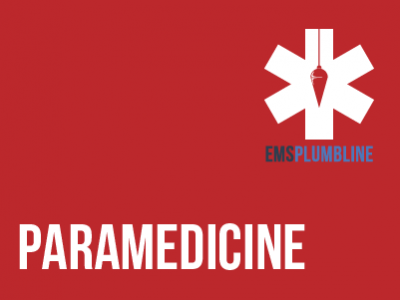 |
Introduction to RSI Part 1—Pharmacology Overview |
1.50 |
This course has been designed for the paramedic who is entering a Rapid Sequence Induction (RSI) course for the first time, or the RSI student who needs a brief review. Nicole M. Acquisto, Doctor of Pharmacy, does a fantastic job of summarizing medication concerns with each phase of the process. Final Exam: This multiple-choice exam is designed to test your knowledge of the material you just reviewed. You have two attempts to gain an 80% or higher on this exam. Please take your time and answer each question carefully. |
 |
Fundamental Tools to Monitor Child Development (CDA 7) |
2.00 |
This course immerses early care and education professionals in the powerful trio of observation, documentation, and assessment. Discover how these tools allow you to closely monitor each child's progress, identify individual needs and interests, and tailor support accordingly. Dive deeper into using assessment activities to refine and elevate the quality of preschool care, ensuring every child reaches their full potential. |
 |
Understanding the Freedom of Information Act (FOIA) in Schools |
1.25 |
This course includes comprehensive information about the Freedom of Information Act (FOIA) and its implications in educational institutions. It includes FOIA basics, compliance requirements, best practices, and case studies relevant to schools. This is just one of the many K-12 Education courses we offer. |
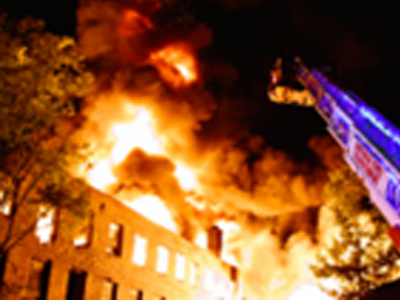 |
Fireground Operations - Strategy Tactic Task |
2.00 |
This course introduces a common language for fireground operation; strategy, tactics, and tasks in an effort to create a standardized interpretation of terminology. This course describes safe strategy selection, defines prioritized tactical objectives, and lists assigned tasks for each tactical objective dependent on strategy. This course introduces the idea of five primary tactical objectives, five secondary tactical objectives, and five functions of command that must be accomplished on every fireground. The course concludes with a procedure for the application of selecting a safe strategy, prioritizing effective tactical objectives, and assigning efficient tasks through the function of command. |
 |
Understanding the CDA Credential and Process (CDA 6) |
2.00 |
This course introduces the CDA Credential™, a nationally recognized pathway for early childhood professionals to bolster their knowledge, hone their skills, and advance their careers. Explore the CDA process, its diverse pathways, and its potential alignment with your professional development goals. Discover how well-equipped caregivers, empowered by the CDA, contribute to nurturing environments that foster optimal learning and development for young children. |
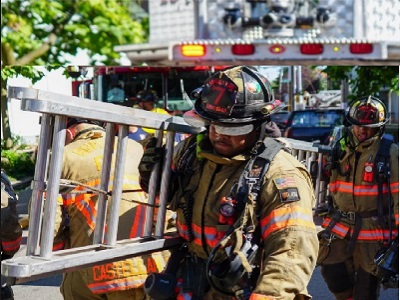 |
Fire Service Ground Ladders - BASIC |
1.00 |
This course is a basic-level introduction and review of fire service ground ladders. This course introduces the seven types of fire service ground ladders as defined by NFPA. The course includes a review of ground ladder construction, ground ladder selection by task, and safe operation of the fire service ground ladder. The course is evaluated with a multiple-choice exam that requires a passing score of 80%. The course length is approximately one hour. |
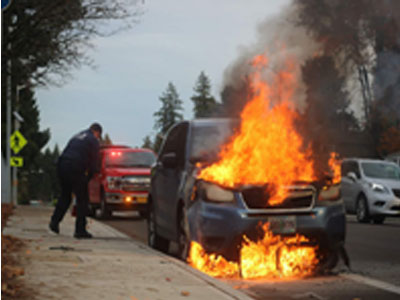 |
Vehicle Fire Operations (NYS05) |
1.00 |
This course is a general overview of safe firefighting operations at vehicle fires. The lesson discusses proper risk management of a vehicle fire through the identification of hazards and application of safe, effective, and efficient operations. Several types of vehicle fires are described and hazards associated with each are identified. The tactical needs and priorities of vehicle fire operation are reviewed. Finally, a safe procedure for performing suppression tasks at a vehicle fire is introduced. The course is evaluated with a multiple-choice quiz. The firefighter must achieve a score of 80% or better to pass the course. |
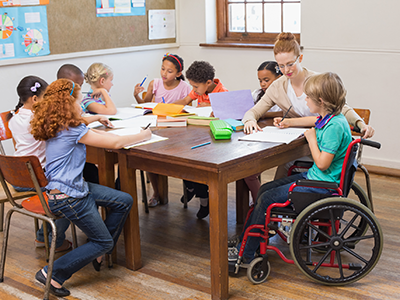 |
Individuals with Disabilities for Teachers |
2.00 |
This course is all about Individuals with Disabilities. This course will help you develop new knowledge about students with disabilities by taking you through the Special Education referral process for school-age and preschool-age children. It will also cover the referral process for early childhood programs. This course will help you understand your role in supporting these students.
Note: Please be aware that this course covers the complete process from Birth to 12th grade, which makes it quite lengthy. While your primary focus might be on Pre-K to 12th grade, it's important to understand how this process develops in the early years. |
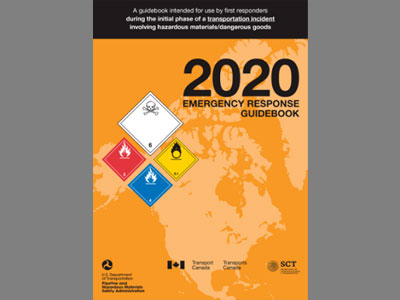 |
Emergency Response Guidebook Activity |
1.50 |
This course is an activity that requires the first responder to utilize the Emergency Response Guidebook to solve a variety of problems. The solution to each of these problems can be found using the 2020 Emergency Response Guidebook Version. Students will need to have a copy of the Emergency Response Guidebook Version 2020 to complete this activity. A 2020 Emergency Guidebook PDF is available for download in this lesson if a copy of the book is not available to the student.
It should be noted that this is an in-service training activity. The student must have prior knowledge and training regarding the Emergency Response Guidebook prior to engaging this activity.
|
 |
Introduction to Fireground Size-up |
2.00 |
This course is an extensive introduction to fireground size-up and is a prerequisite for all other Vigilant size-up courses. This lesson defines the term size up and describes its purpose in fireground operations. The elements of a proper size-up are defined and described. The course introduces a five-step procedure for implementing the size-up process on the fireground. Each step of this procedure is defined and described with an explanation of the elements that are identified during each step. The lesson concludes with an overall summary and final evaluation. |
 |
Fire Origin and Cause – Basic |
2.00 |
This course is an introductory level course that defines fire cause and origin investigation and arson awareness. This course explains fire origin, cause, and arson and a description of common fire causes. Fire cause classifications are defined, and arson motives are described. Signs of arson are identified, and methods for evidence preservation are outlined. The course is evaluated with a final exam that requires a passing score of 80%. The clock time for this course is approximately 2-hour. |
 |
Ground Cover Fires |
1.50 |
This course is an introductory level course that introduces the basic concepts of fighting fires that involve natural ground cover. This course describes fire behaviors associated with ground cover fires, identifies the types of equipment as well as methods used to combat these fires. The lesson also identifies specific hazards associated with ground cover fires and describes methods for mitigating the risk of those hazards. |
 |
Fireground Communications - BASIC |
2.00 |
This course is an introductory-level presentation that introduces the firefighter to the concept of fireground operations. Fireground communication is integral to effective fireground operations, and proper communications are critical to firefighter safety. This course describes the standard communication model, identifies the communication system, and provides a procedure for conducting proper radio communications, from receiving the alarm, through operating the fireground, to terminating incident command. The course is evaluated with a final exam requiring a score of 80%. Firefighters who complete the course are provided with course materials to aid learning and further their education. The clock time for this course is approximately two hours. |
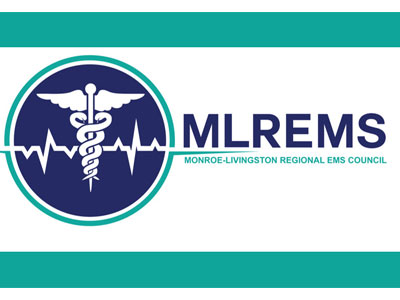 |
RSI for the Non-RSI Provider |
0.50 |
This course is an overview of the RSI procedure and the means by which requests should be made for an RSI provider in the MLREMS system.
The course will describe the RSI process, indications for RSI in the prehospital setting, and what both ALS and BLS providers can do to assist in the RSI process.
Successful completion of the course and accompanying quiz will earn 0.5 hours of CME credit. |
 |
Introduction to Incident Command and Control |
1.50 |
This course is based on the National Incident Management System (NIMS). This course uses lessons to describes a phased process for the implementation of NIMS management characteristics into an Incident Command System. This phased process is a common-sense approach to emergency scene incident command based on the typical timeline for fireground development. It is important that you review local municipal law and organizational policies for implementing Incident Command. This course presents a system for implementing incident command during emergency operations. Incident Command does not have to be implemented using this system however, it needs to be implemented using a system. |
 |
Para-Educator Teaching Team |
1.50 |
This course is designed for both paraprofessionals and teachers. Throughout this course, you will acquire the skills and knowledge necessary to foster a collaborative environment that enhances the learning experience for your students. The goal of this course is to ensure every child is supported by a cohesive team of professionals striving to help the child find success in their education. This course will help you develop new knowledge about your student's team members and will help you understand what your role as a paraprofessional or teacher is. |
 |
Fundamentals of Tutoring |
1.50 |
This course is designed for educators at all levels who are new to tutoring or wish to enhance their tutoring skills. It is also suitable for educators seeking to deepen their understanding of individualized instruction and build stronger relationships with their students outside the traditional classroom setting. It is just one out of many courses we offer. |
 |
Health and Safety in the Laboratory |
0.75 |
This course is designed for employees who work in a laboratory setting. It covers the health and safety measures that should be taken in the lab and how to best protect yourself from hazardous exposures. |
 |
Honest Jobs |
0.25 |
This course is designed to assist learners in creating and using an Honest Jobs account to help secure post-incarceration employment. |
 |
Collaborative Protocol Update - Ketamine |
0.60 |
This course is designed to be taken by all ALS providers in the MLREMS region as an addition module for the 2017 NYS Collaborative Protocol update.
A score of 70% is required to pass the exam which follows. |
 |
Collaborative Protocol Update - Patella Dislocation |
0.40 |
This course is designed to be taken by all BLS and ALS providers in the MLREMS region as an addition module for the collaborative protocol update.
A score of 70% is required to pass the exam which follows. |
 |
Offender Responsibility |
1.00 |
This course is designed to demonstrate the importance of taking responsibility and accepting the consequences of our actions. You will learn how to achieve and maintain a positive mindset, as well as how to be happy and successful in life. Finally, we will review strategies for more effectively managing life's problems. |
 |
Understanding Autism in Your Community |
1.00 |
This course is designed to educate communities on how they can work together to be more inclusive and accepting of people with autism. It will give you an overview of the struggles people with autism face and some ways in which communities can make themselves more accessible and autism-friendly. |
 |
Innovative Learning for Modern Educators |
1.50 |
This course is designed to empower educators with the knowledge, skills, and tools necessary to seamlessly integrate innovative learning strategies into their classrooms. It is just one out of many educational professional courses we offer. Educators will develop the expertise to elevate student engagement, retention, and outcomes, surpassing the limitations of traditional teaching methods. Tailored to inspire, challenge, and guide, this course is a transformative journey for educators, equipping them to create enriched and dynamic learning experiences. |
 |
Supporting Social Awareness and Interpersonal Skills for Paraprofessionals |
0.75 |
This course is designed to empower paraprofessionals with the knowledge and practical strategies needed to effectively support social awareness and interpersonal skills in students. Participants will explore the importance of social awareness and interpersonal skills, learn about key concepts, and gain actionable techniques to create a positive and inclusive learning environment that fosters emotional well-being and ethical growth in students. |


























